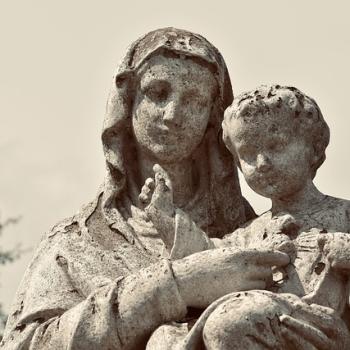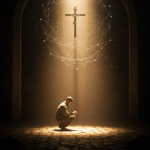We must recognize that this wildness is not merely excess and certainly is not zeal for the kingdom, but is, at least in part, a rebellion against order in general and in principle – indeed a rejection of the very person of the Logos. A kind of preferential option, not for a certain view of the world or a good we wish to advocate for, but for the chaos of the passions. A decision that should we find the light has shined on the darkness and pettiness of our passions, upon our ignorance and upon our peculiar mix of virtues and vices, that it is the light which must be snuffed out, not our sin. That is the light which must be overcome, not the imperfection of our loves.
We do this particularly when we try to find our identity as Christians in opposition to other kinds of Christian, either within or without the Catholic Church. We also do it when we try to find our identity in opposition to the world or some part of it, even if that part is one we (rightly or wrongly) deem sinful. This is not an identity that flows from Christ, but an adversarial identity, an identity of opposition.
I think we should call this what it is- sin obviously, but also in particular. And lest we take our sin too seriously and occupy ourselves with it instead of with repenting of it, I will name it with what I hope is a little bit of whimsy. When we Catholics seek our identity in opposition and disorder, I will from now on call that will to disorder C.atholic O.ppositional D.isorder or COD. I realize this name may be little off-putting since it echoes a style of using the term “disorder” more common in a clinical setting, a setting that this very clearly is not. I think we can transition to the communal usage rather easily though. We just need to remember that it is here not a question of a disorder rooted as such within an individual but in individual and shared visions of our community, and that is it not a pathological disorder, but a moral one. We are dealing here either with a disordered vision of what our community ought be or of a commitment to such a disordered vision. Individual disorder is relevant here not as its own focus, but as something that we often seek to write large and reshape the world and the Church to fit. Calling it for the disorder it is will help us to remember that it is instead our calling to look to the world God so loved and to the Church he fashioned as icons of Christ. Gazing upon Christ and allowing his gaze to penetrate us, we can then learn to reshape ourselves.
There is an important implication for those of us writing and speaking in Catholic media of all kinds. The next time one of us is tempted to go off on some (in)glorious crusade we should remember that we would be writing or producing a COD piece. When we want to comment on or critique someone else’s COD piece, we are essentially sniffing around a COD piece. When we want to get an audience for our advocacy or dis-advocacy we can perform a simple sniff test- we can ask ourselves- am I doing this because I believe it is right? Or am I hawking a rotten COD piece?
Oh, well. Catholics all like fish, don’t we?













